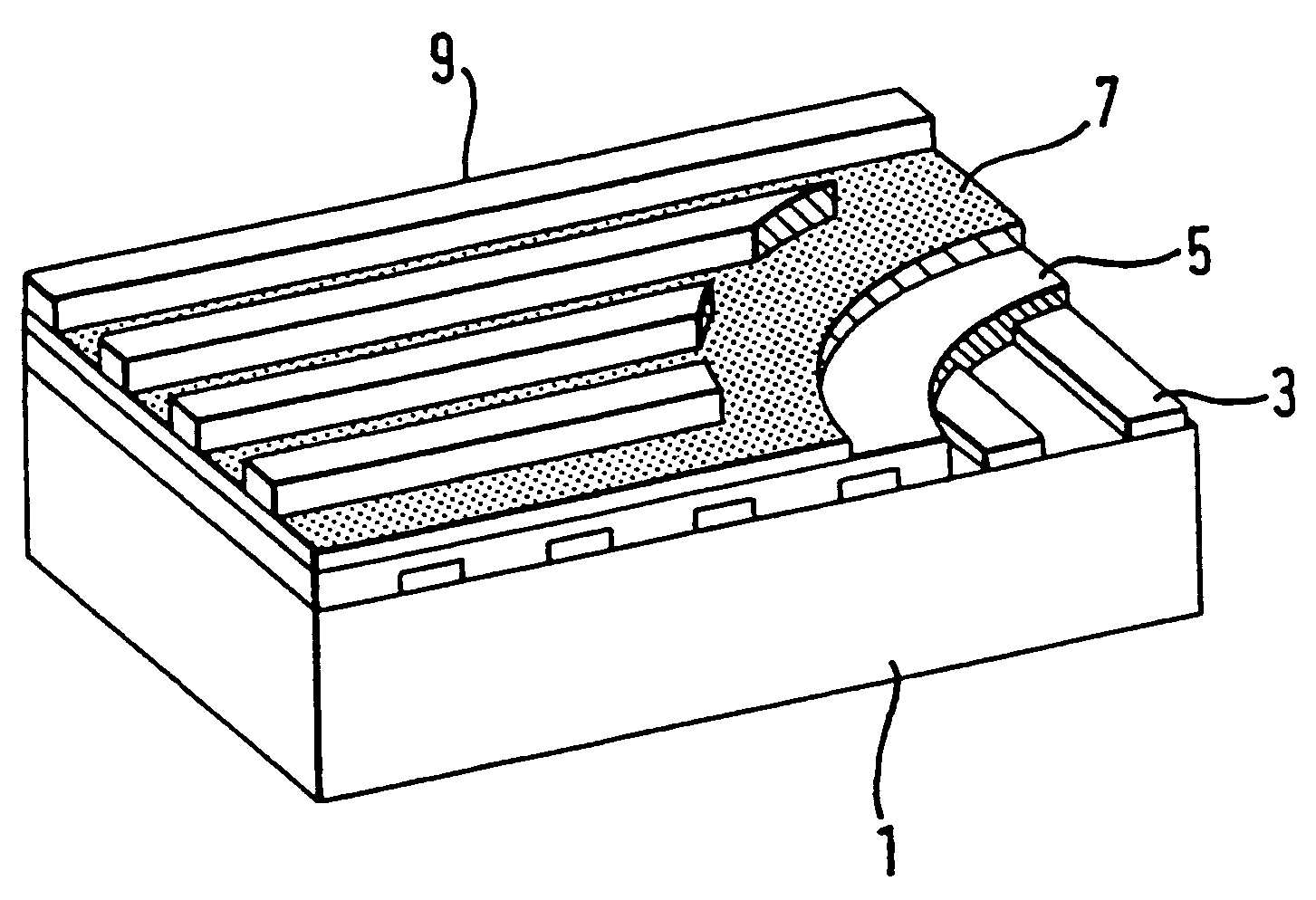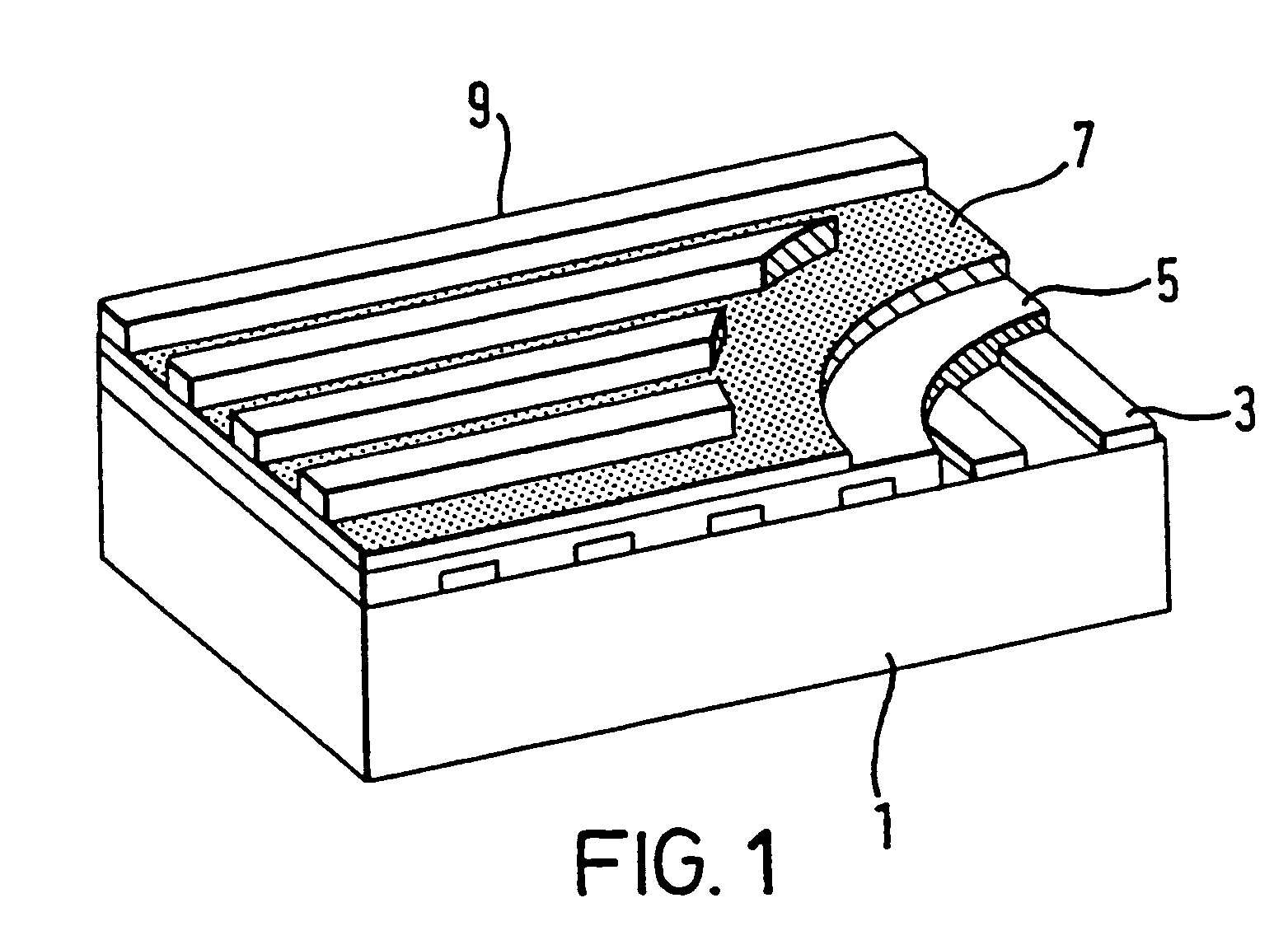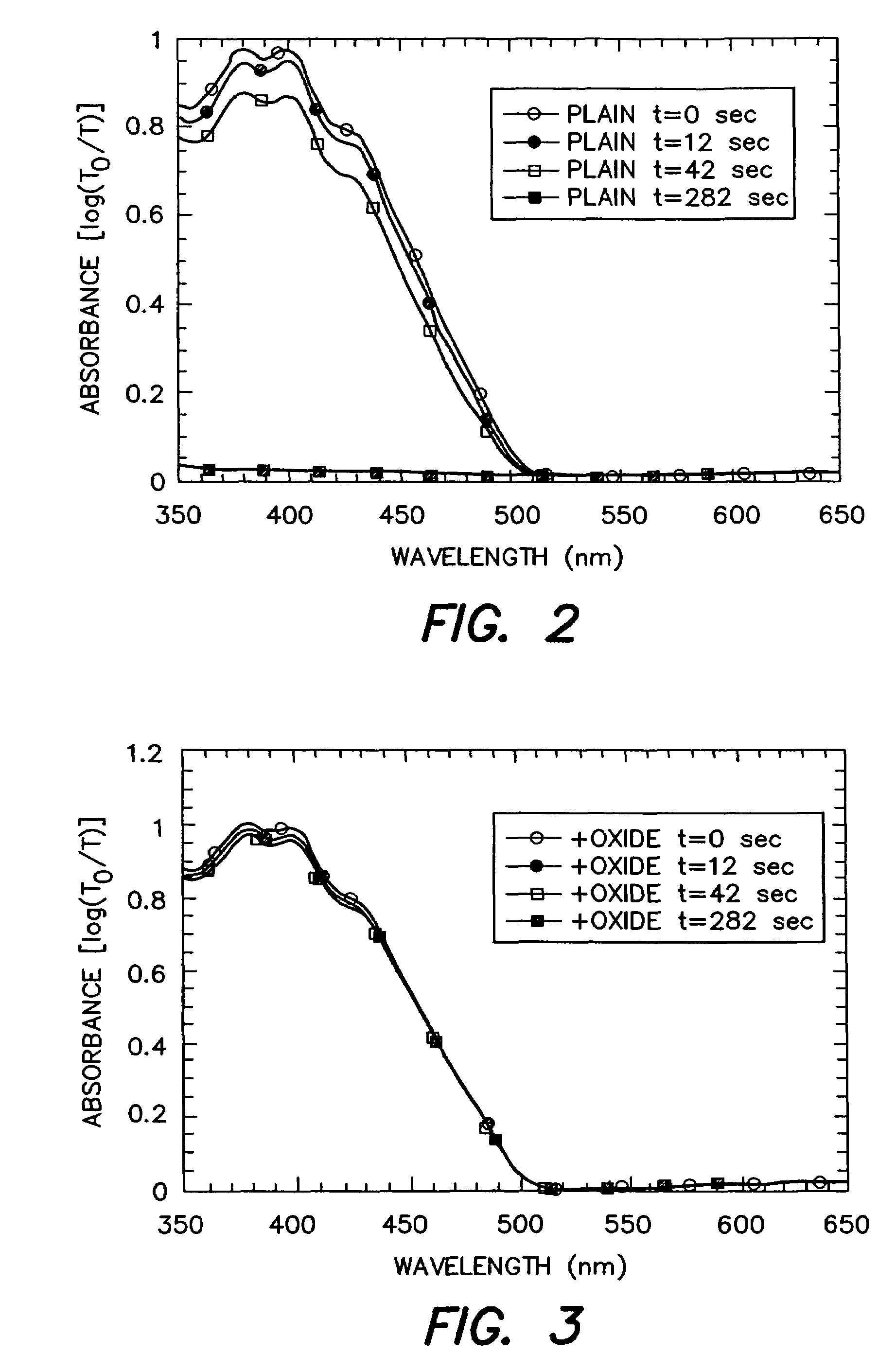Organic light-emitting device and method of fabricating the same
a light-emitting device and organic technology, applied in thermoelectric devices, basic electric elements, electric apparatus, etc., can solve the problems of significant constraints on the use of shadow masks, low light-emitting efficiency, and inability to achieve high resolution, etc., to achieve improved performance and stability, easy control, and desired electrical properties
- Summary
- Abstract
- Description
- Claims
- Application Information
AI Technical Summary
Benefits of technology
Problems solved by technology
Method used
Image
Examples
Embodiment Construction
[0049]The organic light-emitting device comprises a substrate 1, an anode 3 formed over the substrate 1, a layer 5 of a light-emissive organic material formed over the anode 3, a barrier layer 7 formed over the organic layer 5, and a cathode 9 formed over the barrier layer 7.
[0050]The substrate 1 is a piece of glass, preferably having a thickness of less than 1.1 mm. The anode 3 is a patterned array of lines, preferably of indium-tin oxide having a thickness of from 50 to about 200 nm. The organic layer 5 is a layer of poly(p-phenylene vinylene) (PPV), an organic conjugated polymer as described in our earlier U.S. Pat. No. 5,247,190. The organic layer preferably has a thickness of the order of 100 nm. The barrier layer 7 is a continuous layer of aluminium-lithium oxide of about 3.5 nm in thickness. The cathode 9 is a patterned array of lines.
[0051]The organic light-emitting device is fabricated in the following way. The substrate is coated with a thin layer of a conductive material,...
PUM
 Login to View More
Login to View More Abstract
Description
Claims
Application Information
 Login to View More
Login to View More - R&D
- Intellectual Property
- Life Sciences
- Materials
- Tech Scout
- Unparalleled Data Quality
- Higher Quality Content
- 60% Fewer Hallucinations
Browse by: Latest US Patents, China's latest patents, Technical Efficacy Thesaurus, Application Domain, Technology Topic, Popular Technical Reports.
© 2025 PatSnap. All rights reserved.Legal|Privacy policy|Modern Slavery Act Transparency Statement|Sitemap|About US| Contact US: help@patsnap.com



